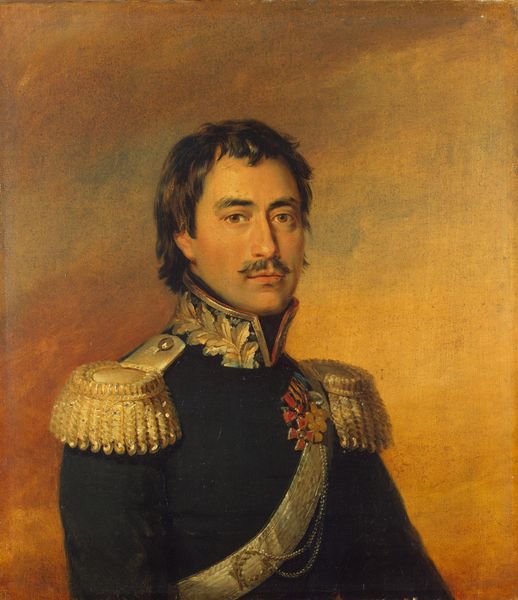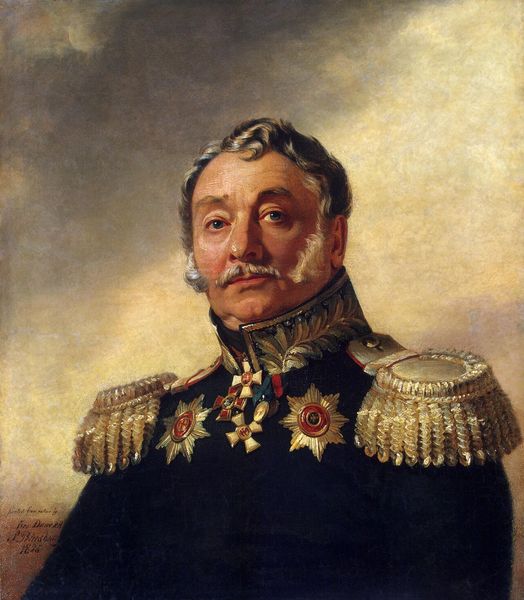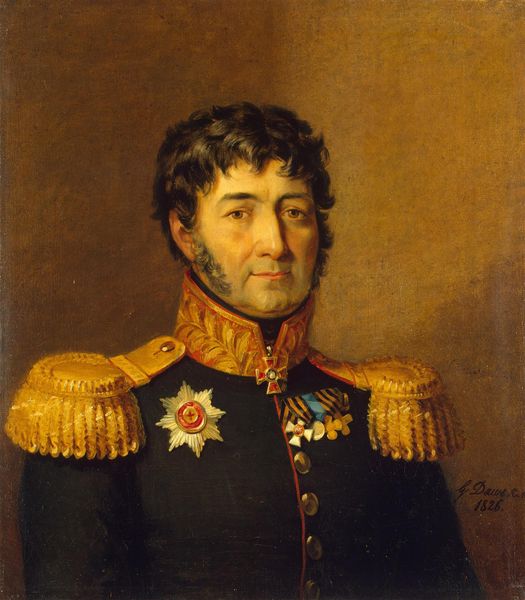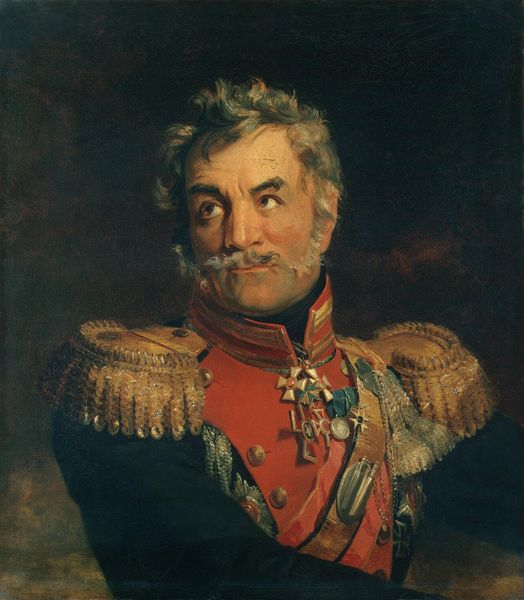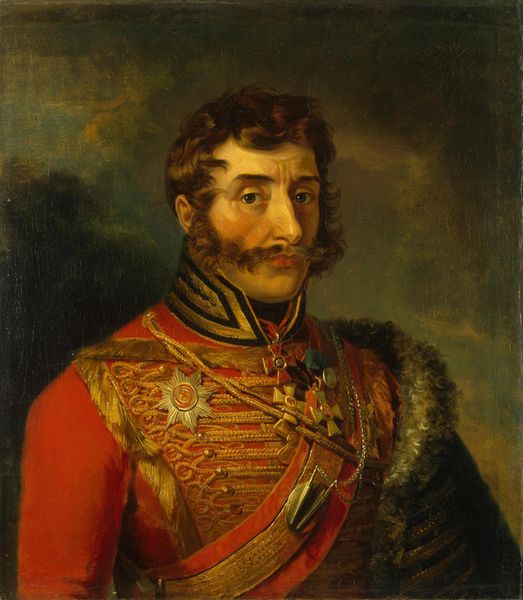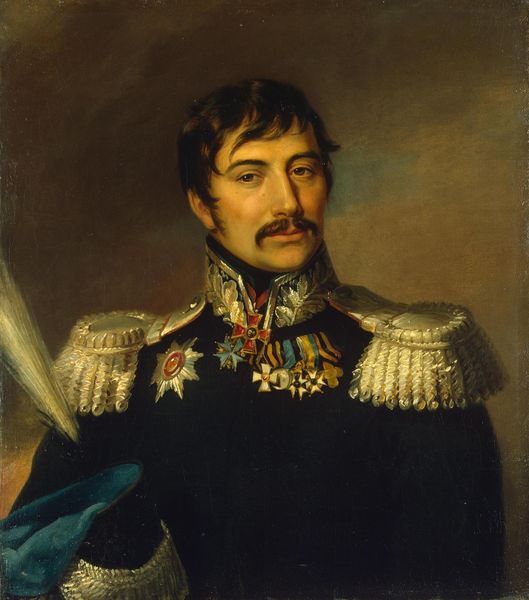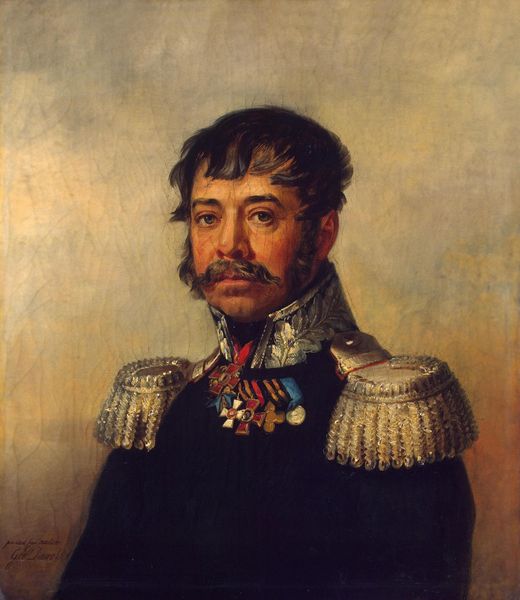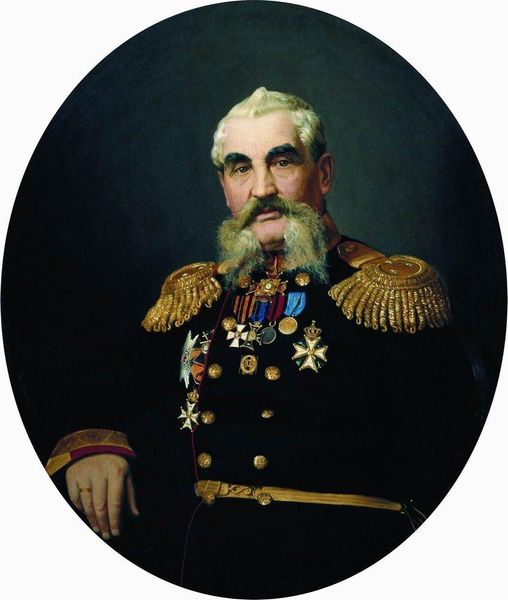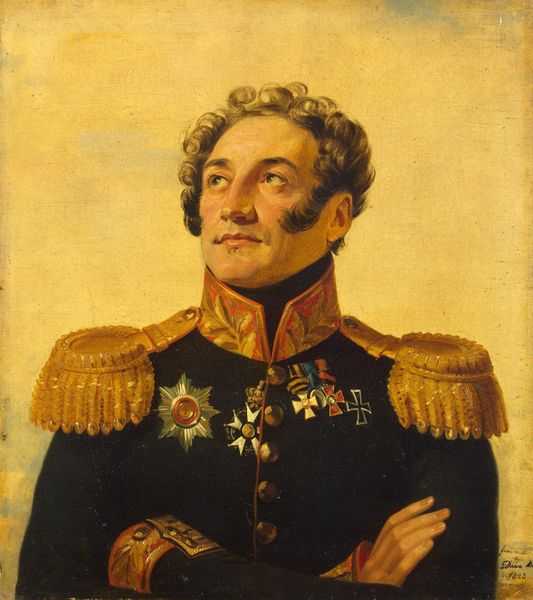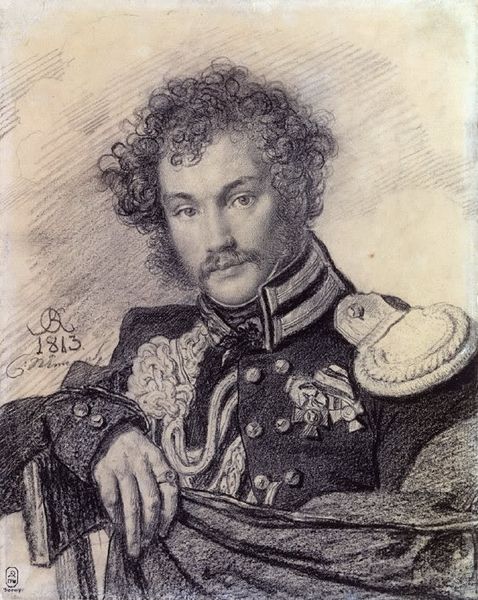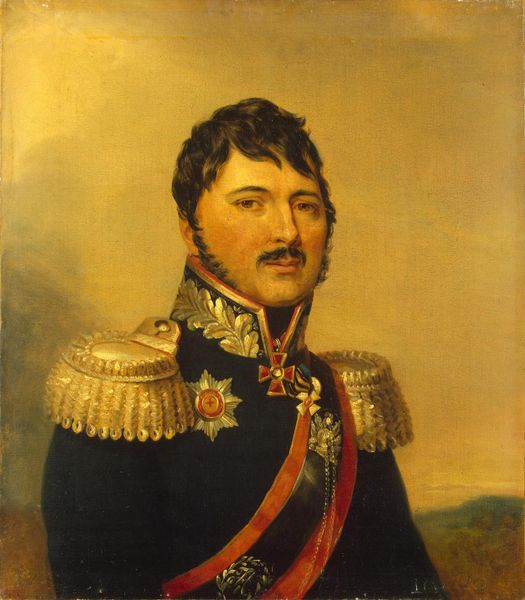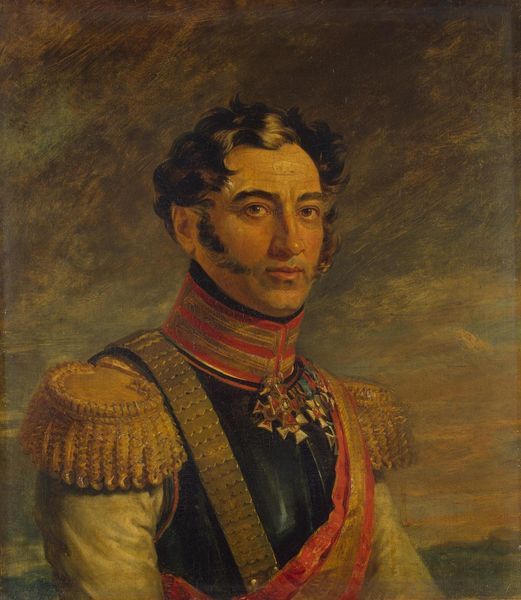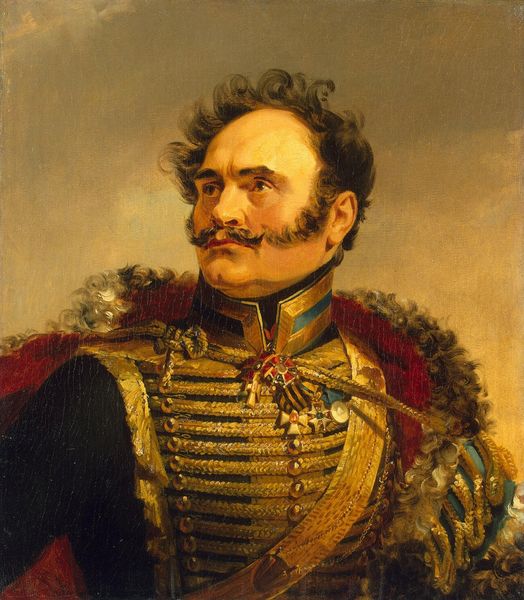
painting, oil-paint
#
portrait
#
painting
#
oil-paint
#
romanticism
#
history-painting
#
academic-art
#
realism
Copyright: Public domain
Curator: Here we have Miklos Barabas's 1848 portrait of Count István Széchenyi. The artwork resides here at the Hungarian National Museum in Budapest, done in oil on canvas. A wonderful, arresting image if I do say so myself. Editor: It’s serious, almost severe. The eyes are incredibly direct. The uniform…it all speaks of power, doesn’t it? That little half-smile, as though he knows something you don’t... or *suspects* it. And those eyebrows are quite striking—did you notice them? I think this man must have seen a thing or two. Curator: You are spot on with that observation. The portrait captures Széchenyi, a major figure in 19th-century Hungarian history. Called "the Greatest Hungarian," Széchenyi was an aristocrat, a reformer, and a philosopher. He was instrumental in modernizing Hungary. He pioneered transportation, industry, and social institutions. Editor: Those honors pinned to his chest; they are like encoded stories waiting to be deciphered! The composition places all focus on Széchenyi himself. It creates a kind of psychological closeness to the viewer. His serious demeanor tells about someone important. Curator: Barabas was an incredible portrait painter known for his ability to depict the essence of his subjects, that’s true! As you suggest, there is symbolism throughout, even in the accouterments. The medals, fur robe, even the exquisitely knotted cording, convey nobility, influence, and, crucially, Széchenyi's position within Hungarian society at that time. Editor: And that position became…complicated, didn’t it? Because 1848, the year it was painted, was a year of revolution in Hungary. In light of this, those adornments could easily suggest wealth and comfort while a revolution of the poor occurred nearby. How complicated is that, even when considered through a twenty-first-century perspective? Curator: Precisely. His legacy is complex because, while being a champion of progress, Széchenyi eventually resisted the more radical elements of the revolution, fearing social upheaval. This portrait offers a fascinating glimpse into the life of a pivotal figure at a time of great change, one that reflects the contradictions inherent in progress itself. Editor: A remarkable piece that captures not just a likeness, but also an entire era's aspirations and anxieties! That is one powerful painting that offers so much, both on the surface and in what it implies.
Comments
No comments
Be the first to comment and join the conversation on the ultimate creative platform.
